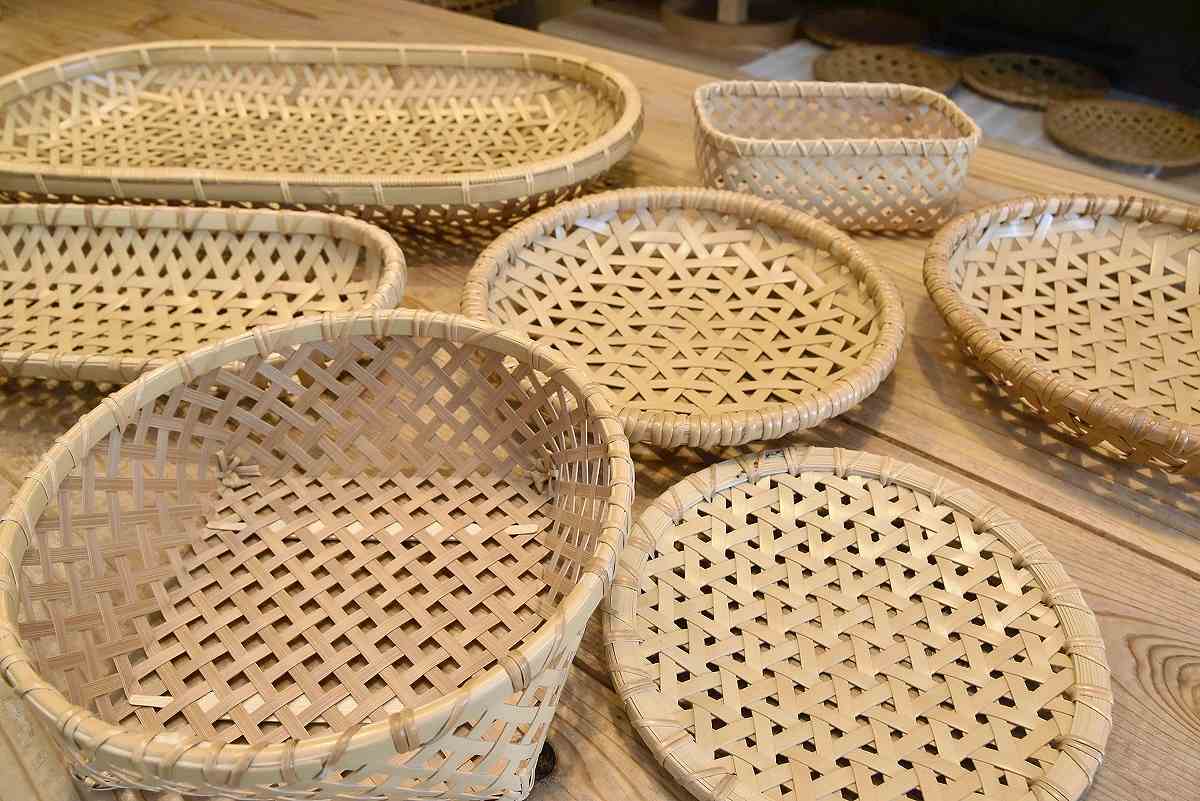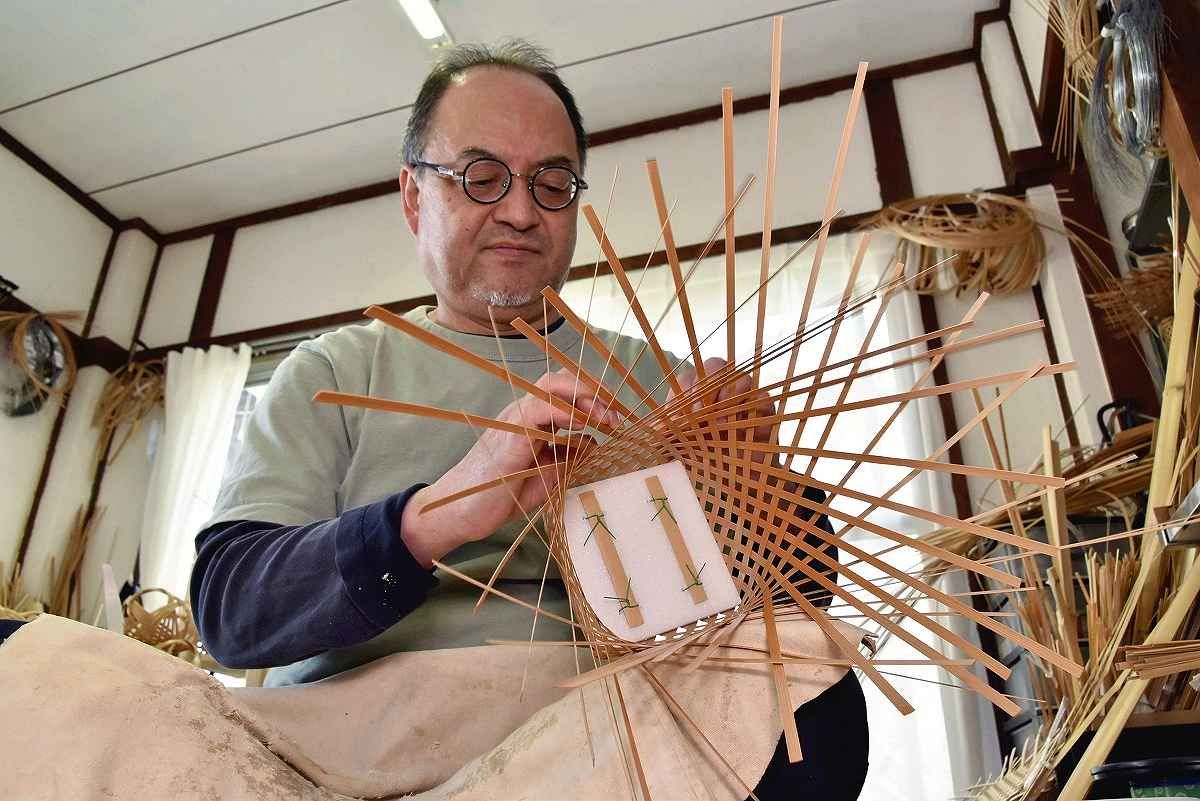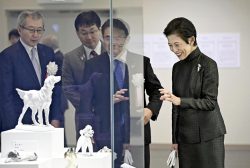
Various bamboo baskets
15:53 JST, June 15, 2023
BEPPU, Oita — A craftsman deftly moves his fingers as he weaves an intricate flower basket using bamboo strips, each only about half a millimeter thick.
“Eighty percent of the work is making these strips,” said Kenichi Otani, 57, a master of traditional crafts who runs the bamboo craft studio Chikufusha in Beppu, Oita Prefecture. “It’s a very important job.”

Kenichi Otani weaves together bamboo strips in Beppu, Oita Prefecture.
Japanese timber bamboo, known as madake, grown in the prefecture is used because of its durable and resilient quality. The bamboo is repeatedly split in half with a special knife until the desired width is achieved.
Craftsmen will then peel the bamboo’s inner skin and use two types of blades — habatori and sukisen — to make the peeled strips uniform in width and thickness.
More than 200 weaving patterns can be created using only eight methods of weaving, including square and hexagonal.
Bamboo crafts developed in Beppu during the Edo period (1603-1867). With the city being a major hot spring destination, Beppu attracted tourists from across the nation. Sales of colanders and other such daily necessities flourished.
Bamboo crafts took deeper root as the local industry in Beppu in the Meiji era (1868-1912), in part due to the establishment of an institution to develop craftsmen. In 1979, it was designated as a traditional craft.
The Oita Prefectural Bamboo Crafts Training Center in Beppu turns out about 10 craftsmen every year.
Otani, who used to work as a landscaper in Hokkaido, is one of the center’s graduates. He opened his own studio in 2005 and currently works with two younger craftsmen.
With the increase in plastic use and changing lifestyles, there has been a decrease in demand for such bamboo craft products as baskets and kitchenware. To combat the trend, Otani wants to “offer new bamboo products to people in Japan and overseas that suit modern lifestyles.”
For the past 10 years, he has been working with a Tokyo-based art consultant company to create accessories, intricate vases, purses and other products to sell at interior design stores in Tokyo. Otani’s products are also sold at a gallery in New York. Bamboo is valued overseas as an environmentally friendly material.
“No two bamboos are the same regarding their durability and resilience,” Otani said. “I hope the sense of warmth that’s unique to natural materials can be felt through the bamboo crafts.”

A bamboo vase is encased in acrylic.
"Culture" POPULAR ARTICLE
-

Van Cleef & Arpels Dazzles with Art Deco Artisanry at Tokyo Exhibit
-

Disney’s ‘Twisted-Wonderland’ Animated Series Puts Villains in Spotlight: New Show Features School Inspired by Classic Disney Films
-

Japan Plans to Distribute Manga Overseas Via New Platform
-

Ayumi Hamasaki’s Shanghai Concert Canceled Day Before Schedule as Part of Beijing Backlash
-

‘The World Masterpiece Theater Series’ Celebrates 50 Years; Animator Looks Back on Creating Anime Classics
JN ACCESS RANKING
-

Tokyo Economic Security Forum to Hold Inaugural Meeting Amid Tense Global Environment
-

Keidanren Chairman Yoshinobu Tsutsui Visits Kashiwazaki-Kariwa Nuclear Power Plant; Inspects New Emergency Safety System
-

Imports of Rare Earths from China Facing Delays, May Be Caused by Deterioration of Japan-China Relations
-

University of Tokyo Professor Discusses Japanese Economic Security in Interview Ahead of Forum
-

Japan Pulls out of Vietnam Nuclear Project, Complicating Hanoi’s Power Plans

























